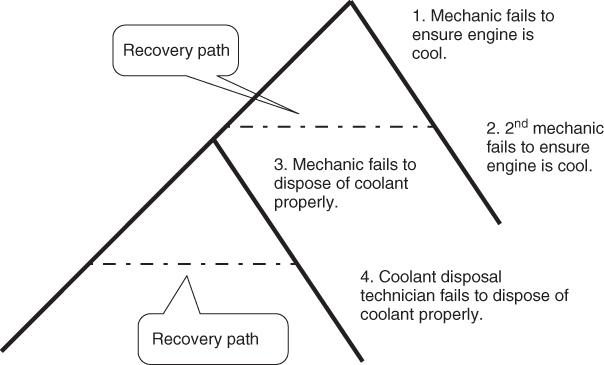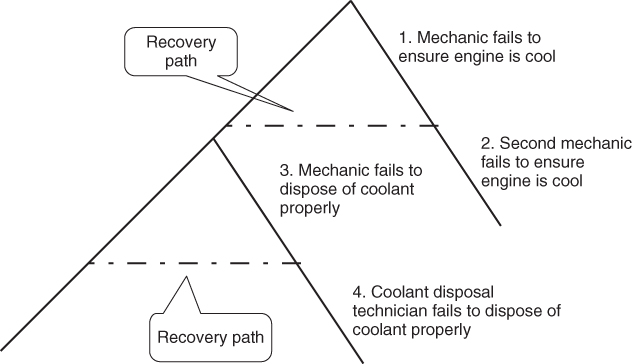10.6 Use of Human Reliability Analysis Techniques for Analyzing Procedures
HRA techniques should be reserved for the most critical procedures. For instance, HRA should not be used for analyzing simple maintenance procedures because of the cost of performing the analysis. However, for critical operations, it is appropriate. Determining where recovery actions, such as inspection steps, should be in procedures is the best use of HRA techniques. Tools such as Tool for Human Error Analysis (THEA) (5) can be used for such analyses. The following analysis shows how HRA can be used to determine where recovery actions should be placed.
A modified coolant flush procedure will be used as the basis of the example. Procedure is listed as follows
10.6.1 Procedure
Figure 10.5 is an HRA event tree representation of the procedure. Eight failure paths were found for this procedure. Some of these failure paths are more critical than others. Adding a recovery step will greatly reduce the probability of a failure (see Reference 6 for a complete discussion of recovery and dependency). However, an inspection or other recovery step should be included if the PHA or FMEA/FMECA has shown these steps as being critical. For instance, if there is a 0.01 probability of a failure and an inspection step is added that has a probability of failure of 0.1 then the probability of failure is reduced by a factor of 10.
![]()
In this procedure, the critical steps are those dealing with the temperature of the cooling system and the toxicity of the coolant. Note that dashed lines are used to indicate the recovery actions. Therefore, inspection steps are added after steps 1, 2, 5, and 8. Steps 1 and 2, including the inspection steps, are listed in the following section.
Figure 10.5 HRA event structure of coolant flush procedure.

10.6.2 Procedure with Inspection Steps
Figure 10.6 shows how the HRA event tree would be modified for steps 1 and 2.
Figure 10.6 Modified event tree.

